Amazing Orchids That Grow Wild In Pastures!
Imagine this. You’re strolling in a meadow and suddenly you sniff the strong smell of billy goats, only to find that the goat you smelled is a flower! But not just any flower. This flower-that-stinks-like-a-goat is an ORCHID, and the meadow you are strolling through is just an ordinary cow pasture.
|
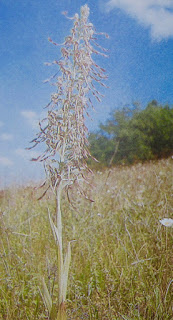
|
|
Goat Orchid
|
|
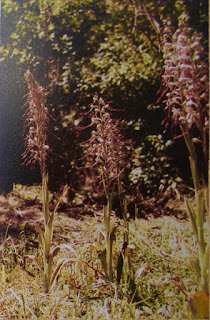
|
|
Goat Orchid
|
You may have thought that orchids grow wild only in the tropical trees of exotic places like Borneo or Peru, but the goat-smelling orchid you see here grows wild in the pastures of southwestern France, and it grows, not in trees, but on the ground, right along with the grass!
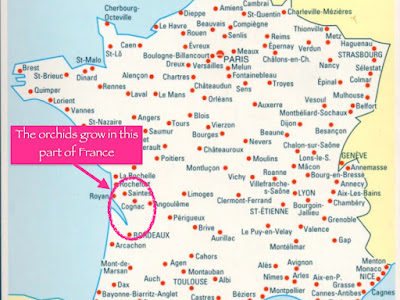
Even more amazing, this stinky orchid is just one of 68 wild terrestrial orchids that can be found in these French pastures from April through October. Here you can see one such meadow. Look closely and you’ll see that the green is sprinkled with specks of color, and all of the colorful specks are orchids.
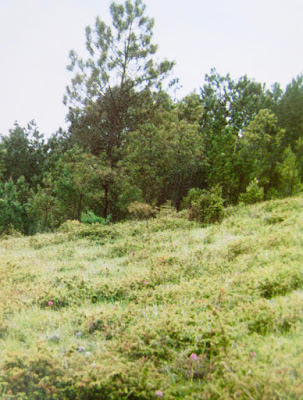
One of the most common of these orchids is a pretty one called the Charente. As you can see, it comes in a variety of colors and shapes.
|
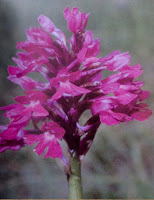
|
|
Charente
|
|
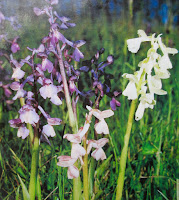
|
|
Charente
|
The goat orchid is not the only wild French orchid known for its smell. The Scented Gymnadenia orchid, which also grows in meadows from Sweden to Greece, is known for its wonderfully sweet smell. This orchid can be eaten and is very nutritious, not only, but a jelly made from the bulb is used to treat upset digestive systems!
|
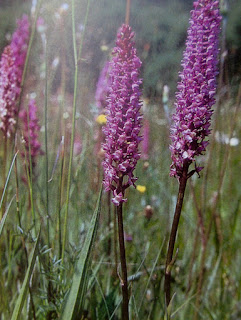
|
|
Scented Gymnadenia
|
However, of the 68 species of orchids growing in these French meadows, the most interesting are the ones that mimic other meadow creatures. The bee orchid, as its name implies, is fuzzy and has a petal that looks like a bee.
|
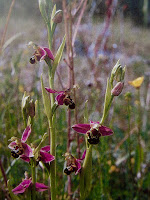
|
|
Bee Orchid
|
|
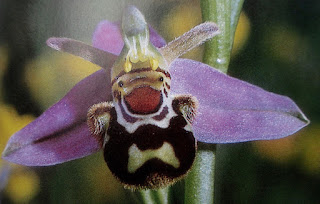
|
|
Bee Orchid
|
The mirror orchid has a hairy fringe and a shiny, mirror-like center on one of its fringes.
|
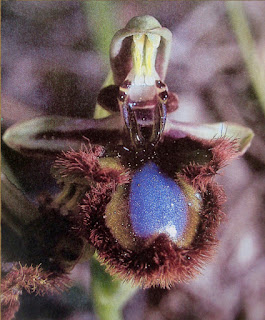
|
|
Mirror Orchid
|
The largest petal on the spider orchid looks a lot like a poisonous spider.
|
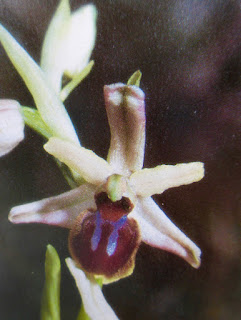
|
|
Spider Orchid
|
|
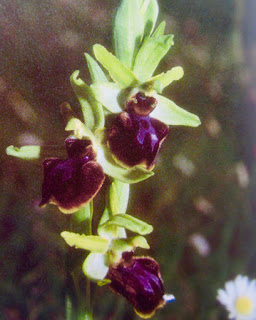
|
|
Spider Orchid
|
The fly orchid mimics the antennae, eyes, and wings of a fly.
|

|
|
Fly Orchid
|
|

|
|
Fly Orchid
|
Perhaps most curious of all the common names people give to the orchids in the meadows of France, however, is the Hanged Man Orchid. The "arms" and "legs" of the flowers are in almost perfect proportion to imitate the human form.
|

|
|
Hanged Man Orchid
|
The pictures I’ve shown you were taken by my orchid-loving friend, Elly Lomax, a native of France. When I saw her slides, I just had to share them with you, and she graciously let me use the pictures.
Are you interested in learning to draw and paint flowers? Start with this art lesson for kids.
Imagine this. You’re strolling in a meadow and suddenly you sniff the strong smell of billy goats, only to find that the goat you smelled is a flower! But not just any flower. This flower-that-stinks-like-a-goat is an ORCHID, and the meadow you are strolling through is just an ordinary cow pasture.
|

|
|
Goat Orchid
|
|

|
|
Goat Orchid
|
You may have thought that orchids grow wild only in the tropical trees of exotic places like Borneo or Peru, but the goat-smelling orchid you see here grows wild in the pastures of southwestern France, and it grows, not in trees, but on the ground, right along with the grass!

Even more amazing, this stinky orchid is just one of 68 wild terrestrial orchids that can be found in these French pastures from April through October. Here you can see one such meadow. Look closely and you’ll see that the green is sprinkled with specks of color, and all of the colorful specks are orchids.

One of the most common of these orchids is a pretty one called the Charente. As you can see, it comes in a variety of colors and shapes.
|

|
|
Charente
|
|

|
|
Charente
|
The goat orchid is not the only wild French orchid known for its smell. The Scented Gymnadenia orchid, which also grows in meadows from Sweden to Greece, is known for its wonderfully sweet smell. This orchid can be eaten and is very nutritious, not only, but a jelly made from the bulb is used to treat upset digestive systems!
|

|
|
Scented Gymnadenia
|
However, of the 68 species of orchids growing in these French meadows, the most interesting are the ones that mimic other meadow creatures. The bee orchid, as its name implies, is fuzzy and has a petal that looks like a bee.
|

|
|
Bee Orchid
|
|

|
|
Bee Orchid
|
The mirror orchid has a hairy fringe and a shiny, mirror-like center on one of its fringes.
|

|
|
Mirror Orchid
|
The largest petal on the spider orchid looks a lot like a poisonous spider.
|

|
|
Spider Orchid
|
|

|
|
Spider Orchid
|
The fly orchid mimics the antennae, eyes, and wings of a fly.
|

|
|
Fly Orchid
|
|

|
|
Fly Orchid
|
Perhaps most curious of all the common names people give to the orchids in the meadows of France, however, is the Hanged Man Orchid. The "arms" and "legs" of the flowers are in almost perfect proportion to imitate the human form.
|

|
|
Hanged Man Orchid
|
The pictures I’ve shown you were taken by my orchid-loving friend, Elly Lomax, a native of France. When I saw her slides, I just had to share them with you, and she graciously let me use the pictures.
Are you interested in learning to draw and paint flowers? Start with this art lesson for kids.
Imagine this. You’re strolling in a meadow and suddenly you sniff the strong smell of billy goats, only to find that the goat you smelled is a flower! But not just any flower. This flower-that-stinks-like-a-goat is an ORCHID, and the meadow you are strolling through is just an ordinary cow pasture.
|

|
|
Goat Orchid
|
|

|
|
Goat Orchid
|
You may have thought that orchids grow wild only in the tropical trees of exotic places like Borneo or Peru, but the goat-smelling orchid you see here grows wild in the pastures of southwestern France, and it grows, not in trees, but on the ground, right along with the grass!

Even more amazing, this stinky orchid is just one of 68 wild terrestrial orchids that can be found in these French pastures from April through October. Here you can see one such meadow. Look closely and you’ll see that the green is sprinkled with specks of color, and all of the colorful specks are orchids.

One of the most common of these orchids is a pretty one called the Charente. As you can see, it comes in a variety of colors and shapes.
|

|
|
Charente
|
|

|
|
Charente
|
The goat orchid is not the only wild French orchid known for its smell. The Scented Gymnadenia orchid, which also grows in meadows from Sweden to Greece, is known for its wonderfully sweet smell. This orchid can be eaten and is very nutritious, not only, but a jelly made from the bulb is used to treat upset digestive systems!
|

|
|
Scented Gymnadenia
|
However, of the 68 species of orchids growing in these French meadows, the most interesting are the ones that mimic other meadow creatures. The bee orchid, as its name implies, is fuzzy and has a petal that looks like a bee.
|

|
|
Bee Orchid
|
|

|
|
Bee Orchid
|
The mirror orchid has a hairy fringe and a shiny, mirror-like center on one of its fringes.
|

|
|
Mirror Orchid
|
The largest petal on the spider orchid looks a lot like a poisonous spider.
|

|
|
Spider Orchid
|
|

|
|
Spider Orchid
|
The fly orchid mimics the antennae, eyes, and wings of a fly.
|

|
|
Fly Orchid
|
|

|
|
Fly Orchid
|
Perhaps most curious of all the common names people give to the orchids in the meadows of France, however, is the Hanged Man Orchid. The "arms" and "legs" of the flowers are in almost perfect proportion to imitate the human form.
|

|
|
Hanged Man Orchid
|
The pictures I’ve shown you were taken by my orchid-loving friend, Elly Lomax, a native of France. When I saw her slides, I just had to share them with you, and she graciously let me use the pictures.
Are you interested in learning to draw and paint flowers? Start with this art lesson for kids.
















